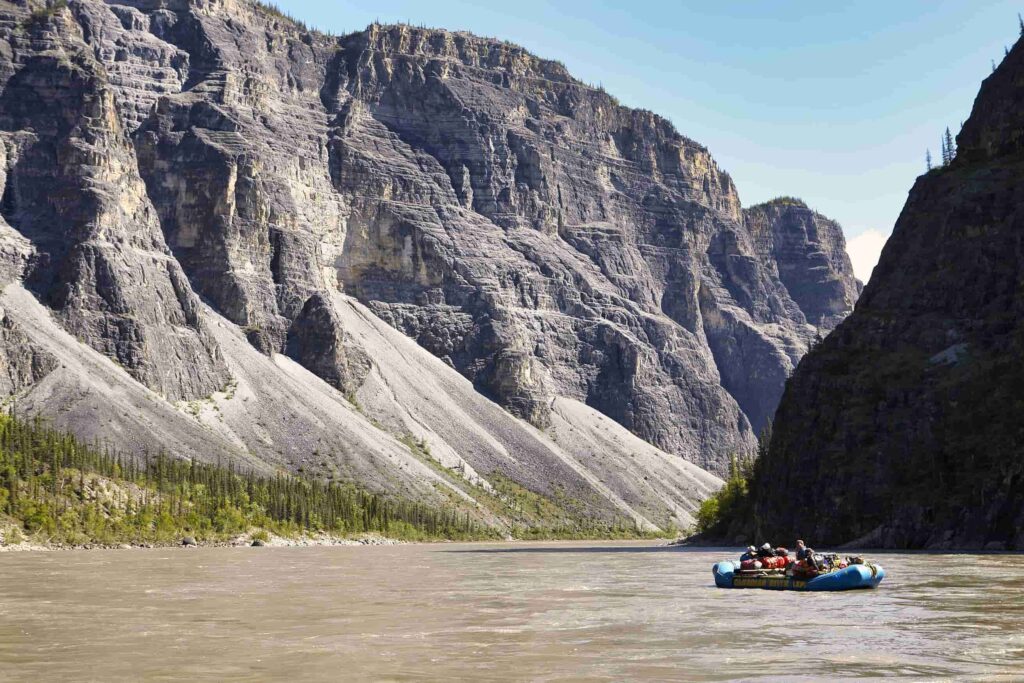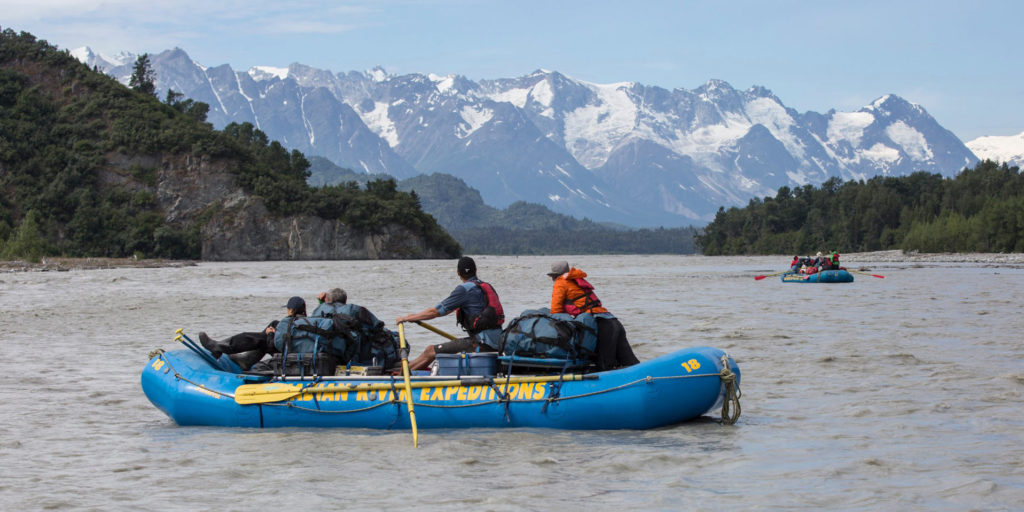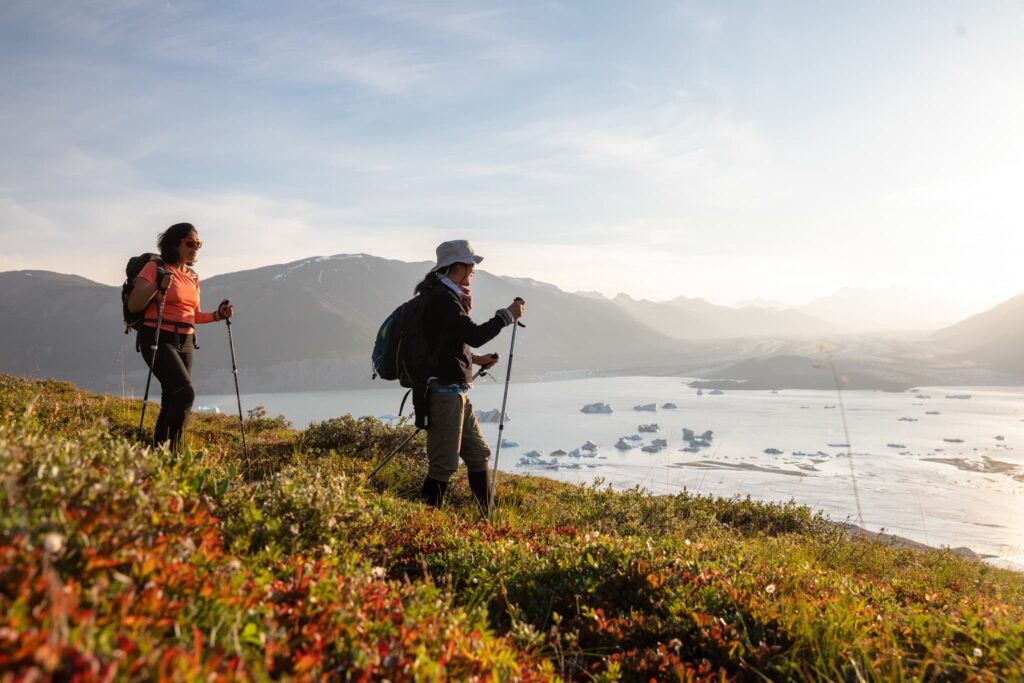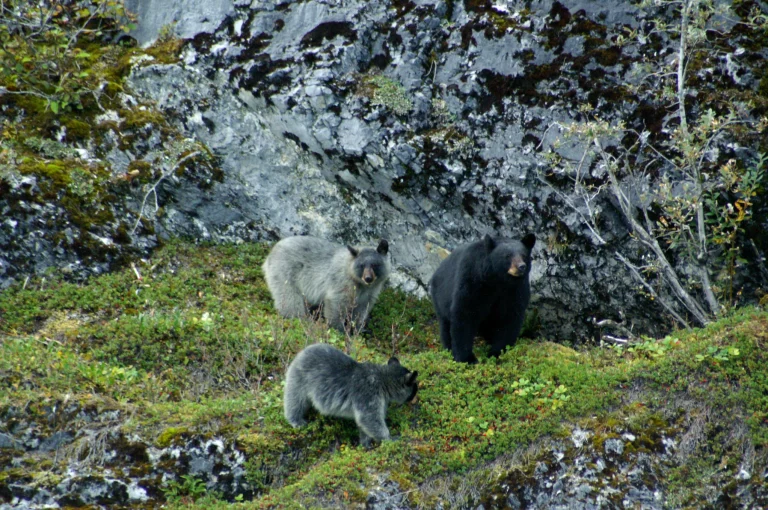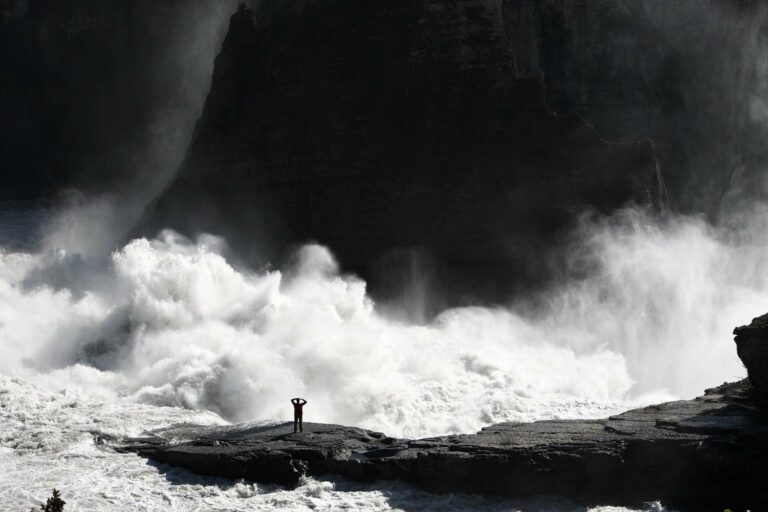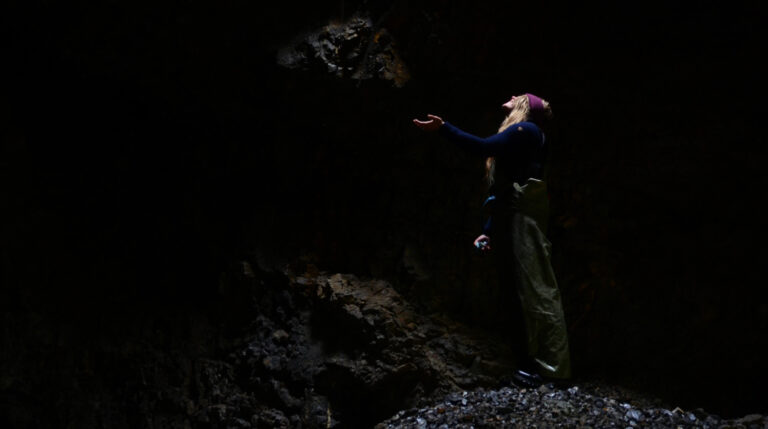In the early 1990’s we were part of an international effort to protect the Tatshenshini and Alsek Rivers from an ill conceived project that would place a toxic tailings lake, precariously upstream of an international fishery in an area more seismically active than the San Andreas Fault.
The (9,580 km sq) park lies in the northwest corner of BC, bordering Alaska, and Yukon. Combined with Glacier Bay, Kluane and Wrangell St Elias National Parks, it forms the world’s largest bio-preserve.
The Alsek and Tatshenshini rivers course through the dramatic Coast Range, providing stunning scenery and an exciting river journey.
It is so grand that Geologists call it a land of “ests”:
- The world’s largest non-polar icecap,
- Mount Logan, Canada’s tallest mountain – which is also North America’s biggest,
- North America’s longest glaciers,
- And the oldest human remains found in a glacier in North America. To name but a few.
In addition to visual drama, there is a rich history. Over the centuries, numerous indigenous peoples lived in this area, including the historic Tlingit and Southern Tutchone, who built fishing villages along the rivers. The eastern edge of the park follows an ancient trade route from the coast, used and jealously guarded by the Chilkats (a Tlingit people) to barter with the Tutchone.
Dramatic Events
In the mid-19th century, the sudden breakup of a natural glacial dam on the Alsek River caused a severe flood with a volume equivalent to the Amazon. The dam had been formed by the advance of a glacier across the entire Alsek River channel; the obstructed river formed a large temporary lake upstream of the blockage. A wall of water 7 metres high and 15 metres wide swept an entire Tutchone village into the sea at Dry Bay, killing all the inhabitants.
On the Wild Side
Wildlife viewing is rewarded: as well as bears, Tatshenshini-Alsek Park also supports Dall’s sheep, and exceptional numbers of mountain goats, Kenai moose, grey wolves, eagles (bald & golden), falcons (peregrine & gyr), and trumpeter swans, and Along the coastline, sea lions and humpback whales can be seen.
Park Creation
The creation of the park goes back to 1991 when Tatshenshini International was established responding to threats to the salmon fishery and wilderness integrity of the area, linking together the top 50 conservation organizations in North America. An extremely intensive campaign followed in Canada and in the United States, particularly the U.S. Congress and eventually the White House, when the active involvement of then Vice-President Al Gore was enlisted. Eventually, BC Premier Mike Harcourt responded by undertaking a review of the issues surrounding Tatshenshini-Alsek by the Commission on Resources and the Environment (CORE). BC government under Premier Harcourt decided in June 1993 to protect Tatshenshini-Alsek as a Class A park.
UNESCO
In combination with the adjoining national parks, this completed protection of the world’s largest international park complex. The International Union for the Conservation of Nature (IUCN) proposed the area for protection as a UNESCO World Heritage Site. The Kluane-Wrangell-St. Elias-Glacier Bay-Tatshenshini-Alsek trans-frontier park system comprising Kluane, Wrangell-St Elias, Glacier Bay and Tatshenshini-Alsek parks, was declared a UNESCO World Heritage Site in 1994 for the spectacular glacier and icefield landscapes, in addition to the importance of its habitat for grizzly bears, caribou and Dall sheep.
In 1999, a party of sheep hunters found artifacts and remains of a young male at the foot of a glacier in the park; he was later called Kwäday Dän Ts’ìnchi, or “Long Ago Man Found”. The well-preserved frozen body turned out to be between 300 and 550 years old. DNA testing was done of 241 volunteers from the area Champagne and Aishihik First Nations, and related peoples in Yukon, British Columbia and Alaska, to see if people could be found who were genetically related to the “iceman”. Seventeen living relatives were found through a mitochondrial DNA match of the direct female line.
The Alsek and Tatshenshini rivers flow through the park in glacier-carved U-shaped valleys. These valleys through the coastal mountains allow cool, moist ocean air into the cold interior. The quick change from ocean to interior environment, frequent floods, landslides and avalanches, a varied geology and great elevation changes have together created an exceptionally diverse range of habitat conditions.
Tatshenshini-Alsek Park supports a large grizzly bear population. A green area that cuts through a barrier of mountain and ice connects coastal and interior grizzly bear populations and provides a perfect habitat. The park is the only Canadian home of the glacier bear. This extremely rare blue-grey colour phase of the black bear is found only within the park and just over the border into the United States.
As well as bears, Tatshenshini-Alsek Park also supports Dall’s sheep, and exceptional numbers of mountain goats, Kenai moose, grey wolves, eagles (bald & golden), falcons (peregrine & gyr), and trumpeter swans.
Along the coastline, sea lions and humpback whales can be seen.
Alsek Ranges are situated there and Mount Fairweather, at 4,663 metres is the province’s highest peak. The Tatshenshini-Alsek area lies in a region of high earthquake activity. Slippages along the Fairweather and Hubbard/Boarder Faults to the west and the Denali Fault to the north cause regular quakes.


